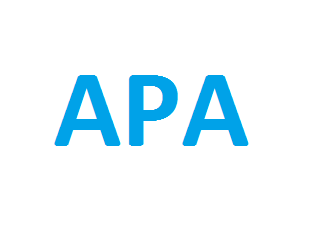
The Academic Perspective Procedia publishes Academic Platform symposiums papers as three volumes in a year. DOI number is given to all of our papers.
Publisher : Academic Perspective
Journal DOI : 10.33793/acperpro
Journal eISSN : 2667-5862
Fen Bilimleri Öğretmenlerinin FeTeMM Eğitimi ve Etkinliklerine Yönelik Görüşleri
Gamze Bolukbasi;Asli Gorgulu Ari
2034
887
Abstract
The purpose of the study is to determine the views of science teachers about Science, Technology, Engineering, Mathematics (STEM) education and activities. The participants of the study were 25 science teachers still working in public and private schools in the different provinces of Turkey in fall semester of 2018-2019. In order to determine the views of science teachers, phenomenological method was used in this qualitative study. Semi-structured interview technique was used as data collection method. During the interview, 4 questions were asked to each participant with 3 expert opinions and also audio was recorded during the interview. The records were created by analyzing the sound recordings, the themes were determined in the tables and the opinions of the teachers were expressed in codes. The results of the research showed that the participants know the definition of STEM education correctly, express the purpose of STEM education, have the disadvantages of STEM education and teachers are aware of them and finally, STEM activities which are prepared effectively based on the experiences of teachers increase the interest of students toward science lessons. The results were discussed in the light of literature.
Keywords:
STEM education, STEM activities, view of science teachers
References
[1] Ensari Ö. Öğretmen Adaylarının FeTeMM Eğitimi ve FeTeMM Etkinlikleri Hakkındaki Görüşleri, Yüksek Lisans Tezi, Van; 2017.
[2] Brophy, S., Klein, S., Portsmore, M., & Rogers, C. Advancing engineering education in P-12 classrooms. Journal of Engineering Education, 2008;369-387.
[3] TÜSİAD, Sorumluluk Bildirimi Raporu 2014-2015.
[4] Akgündüz, D. Aydeniz, M., Çakmakçı, G., Çavaş, B., Çorlu, M., Öner, T. ve Özdemir, S., STEM Eğitimi Türkiye Raporu: ‘‘Günün Modası mı? Yoksa Gereksinim mi?’’ İstanbul Aydın Üniversitesi, STEM Eğitim Merkezi, 2015.
[5] Mishra, B. P. Koehler, M. J., & Kereluik, K. Looking Back to the Future of Educational Technology, TechTrends, 2009;53(5), 49.
[6] Tantu, Özlem. Evaluatıng Mobile Apps for Stem Education with in-service teachers, Yüksek Lisans Tezi;2017.
[7] Council, N. R. National Committee on Science Education Standards and Assessment, National Research Council 1996; 272.
[8] Akaygun, S, ve Aslan-Tutak, F. STEM images revealing stem conceptions of pre-service chemistry and mathematics teachers. International Journal of Education in Mathematics, Science and Technology, 2016; 4(1), 56-71.
[9] Roehrig, G. H. Moore, T. J., Wang, H. H. ve Park, M. S. Is adding the E enough? Investigating the impact of K12 engineering standards on the implementation of STEM integration. School Science and Mathematics, 2012; 112(1), 31-44.
[10] Breiner JM, Harkness SS, Johnson CC ve Koehler CM. What Is STEM? A Discussion About Conceptions of STEM in Education and Partnerships. J School Science and Mathematics 2012;112:3-11.
[11] Çorlu, M. S. FeTeMM eğitimi makale çağrı mektubu. Turkish Journal of Education, 2014; 3(1), 4-10.
[12] Kuenzi, J. J. Science, Technology, Engineering, and. Congressional Research Service. 2008.
[13] Sanders, M., STEM, STEM Education, Stemmania. The Technology Teacher, 2009;68(4),20-26.
[14] Dugger, W. E. Evolution of STEM in the United States. 6th Biennial International Conference on Technology Education Research, Queensland, Australia;2010.
[15] Bybee, R.W. Advancing STEM education: A 2020 vision. Technology and Engineering Teacher, 2010;70 (1), 30-35.
[16] Morrison, J. Attributes of STEM education: The student, the school, the classroom [monograph]. Baltimore, MD: Teaching Institute for Excellence in STEM;2006.
[17] National Research Council [NRC]. A Framework for k-12 Science Education: Practices, Crosscutting Concepts, and Core İdeas. Washington DC: The National Academic Press;2012.
[18] Merrill, C. ve Daugherty, J. STEM education and leadership: a mathematics and science partnership approach. Journal of Technology Education. 2010; 21 (2), 2134.
[19] Langdon, D., McKittrick, G., Beede, D., Khan, B. ve Dom, M. STEM: Good jobs now and for the future. U.S. Department of Commerce Economics and Statistics Administration, 2011;3(11).
[20] Marton, F. Phenomenography: A research approach to investigating different understanding of reality. Journal of Tought, 1986;21(3), 28-49.
[21] Yıldırım, A. ve Şimşek, H. Sosyal Bilimlerde Nitel Araştırma Yöntemleri, Ankara;2008.
[22] Glazar, S. A., Vrtacnik, M. Misconception Of Chemical Concepts, Kemija V Soli, Slovene. Journal Of Chemical Education, (Special Issue) 1992;5, 28-31.
[23] Patton, M. Q. Qualitative Research & Evaluation Methods;Integrating Theory And Practice, Fourth Edıtıon, Utilization-Focused Evaluation, Saint Paul;2014.
[24] Akaygün, S., Aslan-Tutak, F., Bayazıt, N., Demir, K., ve Kesner, J. E. Kısaca FeTeMM eğitimi: Öğretmenler ve öğrencileri için iki günlük çalıştay. 2.International Conference on New Trends in Education, Bahçeşehir Üniversitesi, İstanbul;2015.
[25] Taştan Akdağ, F., Güneş, T. Enerji konusunda yapılan STEM uygulamaları ile ilgili Fen Lisesi öğrenci ve öğretmen görüşleri. International Journal of Social Sciences and Education Research, 2017; 3(5), 1643-1656.
[26] Aydeniz, M. Eğitim Sistemimiz Ve 21. Yüzyıl Hayalimiz: 2045 Hedeflerine İlerlerken, Türkiye için STEM Odaklı Ekonomik Bir Yol Haritası. University of Tennessee, Knoxville;2017.
Cite
-
 %0 Academic Perspective Procedia (ACPERPRO) Fen Bilimleri Öğretmenlerinin FeTeMM Eğitimi ve Etkinliklerine Yönelik Görüşleri% A Gamze Bolukbasi , Asli Gorgulu Ari% T Fen Bilimleri Öğretmenlerinin FeTeMM Eğitimi ve Etkinliklerine Yönelik Görüşleri% D 4/6/2019% J Academic Perspective Procedia (ACPERPRO)% P 47-56% V 2% N 1% R doi: 10.33793/acperpro.02.01.11% U 10.33793/acperpro.02.01.11
%0 Academic Perspective Procedia (ACPERPRO) Fen Bilimleri Öğretmenlerinin FeTeMM Eğitimi ve Etkinliklerine Yönelik Görüşleri% A Gamze Bolukbasi , Asli Gorgulu Ari% T Fen Bilimleri Öğretmenlerinin FeTeMM Eğitimi ve Etkinliklerine Yönelik Görüşleri% D 4/6/2019% J Academic Perspective Procedia (ACPERPRO)% P 47-56% V 2% N 1% R doi: 10.33793/acperpro.02.01.11% U 10.33793/acperpro.02.01.11
© Academic Perspective 2018. All rights reserved.




